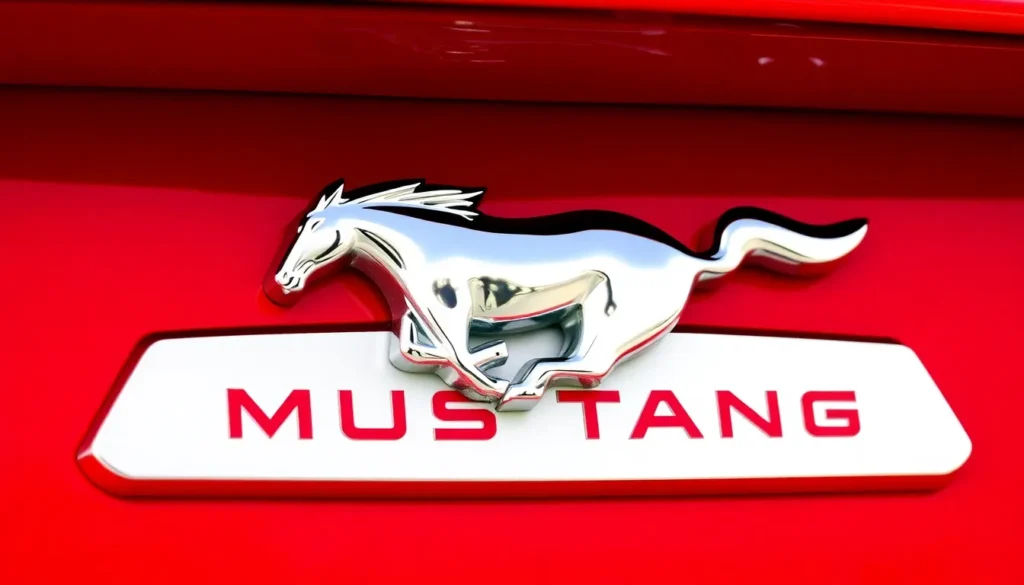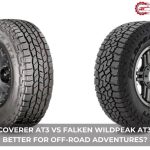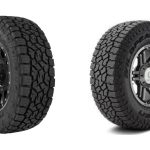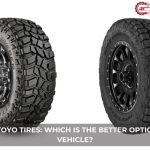The Ford Mustang logo stands as one of the most recognizable automotive emblems in history. Since 1964, this iconic galloping horse has symbolized power, freedom, and American automotive excellence. We’ve all seen it racing down highways and parked in driveways, but there’s so much more to this legendary badge than meets the eye.
Behind that sleek silhouette lies a fascinating story of design evolution, cultural impact, and brand identity that’s shaped generations of car enthusiasts. The Mustang’s logo isn’t just decoration – it’s a carefully crafted symbol that captures the wild spirit and untamed energy Ford wanted to convey with their revolutionary pony car.
We’ll explore how this simple yet powerful design became a cultural phenomenon, influencing everything from fashion to pop culture. From its original conception to modern interpretations, the Mustang logo continues to gallop ahead as a timeless representation of automotive passion and American ingenuity.
The Evolution of the Ford Mustang Logo Through the Decades
The Ford Mustang logo transformed significantly since its debut in 1964, reflecting changing design trends and brand positioning. Each generation brought distinctive modifications that preserved the iconic galloping horse while adapting to contemporary aesthetics.
First Generation Mustang Logo (1964-1973)
Ford introduced the original Mustang emblem featuring a galloping horse facing left within a rectangular chrome frame. The design showcased a muscular stallion with flowing mane and tail, positioned against a red, white, and blue tricolor background that emphasized American heritage.
Chrome bezels surrounded the emblem on both the front grille and rear deck lid, creating a premium appearance that distinguished the Mustang from Ford’s economy vehicles. The horse’s profile displayed bold proportions with emphasized chest muscles and extended front legs, conveying power and forward momentum.
Interior applications featured simplified versions without the tricolor background, appearing as chrome-finished horses on steering wheel centers and optional floor mats. Special editions like the Boss 302 and Mach 1 retained the core horse design while adding model-exact typography and color schemes.
Second Generation Updates (1974-1978)
Mustang II introduced a refined logo featuring a more stylized horse silhouette with cleaner lines and reduced detail complexity. The rectangular frame disappeared in favor of a simpler oval or circular background, reflecting the era’s shift toward streamlined automotive design.
Color applications changed from the patriotic tricolor scheme to solid backgrounds in silver, black, or body-matching hues. The horse itself gained sharper angles and geometric proportions that aligned with 1970s design language emphasizing efficiency over raw power.
Placement locations expanded beyond traditional grille and deck positions to include wheel center caps, door panels, and optional graphics packages. The King Cobra edition featured an enlarged snake emblem alongside the traditional pony, creating Ford’s first dual-symbol Mustang branding approach.
Modern Era Refinements (1979-Present)
Contemporary Mustang logos maintain the galloping horse concept while incorporating digital design precision and enhanced three-dimensional effects. The current emblem features gradient shading, realistic muscle definition, and ever-changing positioning that suggests explosive forward motion.
| Generation | Years | Key Changes |
|---|---|---|
| Fox Body | 1979-1993 | Simplified chrome horse, reduced background elements |
| SN-95 | 1994-2004 | Return to oval frame, enhanced muscle definition |
| S-197 | 2005-2014 | Three-dimensional rendering, premium chrome finish |
| S-550 | 2015-Present | Digital precision detailing, multiple finish options |
Special editions continue the tradition of logo variations, with models like the Shelby GT500 incorporating cobra elements and the Mach-E featuring streamlined interpretations for electric vehicle applications. The Mustang logo’s adaptability across different vehicle platforms demonstrates its enduring relevance in Ford’s design strategy.
Digital applications now include illuminated emblems, projection systems, and customizable LED displays that allow owners to personalize their Mustang’s visual identity while maintaining the iconic galloping horse heritage.
Design Elements and Symbolism of the Running Horse

The Mustang logo’s design elements combine powerful visual metaphors with precise automotive branding strategies. Each component works together to create an unmistakable symbol of American performance and freedom.
The Galloping Pony Design
The galloping pony represents motion, power, and untamed spirit in the Ford Mustang logo design. Artists crafted the horse silhouette to face left, creating a sense of forward momentum that mirrors the vehicle’s performance capabilities. Ever-changing leg positioning shows the horse in mid-stride, emphasizing speed and agility through carefully proportioned anatomical details.
Muscle definition in the horse’s body conveys strength and endurance, while the flowing mane suggests movement and grace. Ford designers positioned the horse within various frame configurations throughout different model years, including rectangular borders, circular badges, and standalone applications. The pony’s proportions maintain consistency across size variations, ensuring brand recognition from hood ornaments to steering wheel emblems.
Color Schemes and Variations
Traditional Mustang logo colors include silver chrome with red, white, and blue tricolor backgrounds representing American automotive heritage. Chrome finishes dominated early model years, creating premium appearance and durability on exterior applications. Red backgrounds appeared on performance variants, while blue versions distinguished special edition models.
Modern color applications feature black and silver combinations for contemporary styling preferences. Electric Mustang variants incorporate blue accent elements to signify electrification technology. Special edition models showcase unique color treatments including gold, bronze, and matte black finishes depending on the exact trim level.
| Color Scheme | Application | Model Years |
|---|---|---|
| Chrome/Tricolor | Standard models | 1964-1978 |
| Red/Chrome | Performance variants | 1965-present |
| Black/Silver | Modern applications | 1994-present |
| Blue/Silver | Electric models | 2020-present |
Typography and Brand Integration
Ford typography complements the Mustang logo through consistent font families and spacing relationships. Block lettering appears beneath or adjacent to the horse emblem, creating unified brand presentation across marketing materials and vehicle badges. Letter spacing matches the logo’s proportional system, ensuring visual harmony between text and graphic elements.
Brand integration extends the logo’s influence across interior trim pieces, wheel center caps, and promotional merchandise. Scaling requirements maintain logo legibility from small key fobs to large dealership signage. Font weight variations accommodate different application contexts while preserving the brand’s authoritative presence in automotive markets.
Different Mustang Logo Variations Across Models
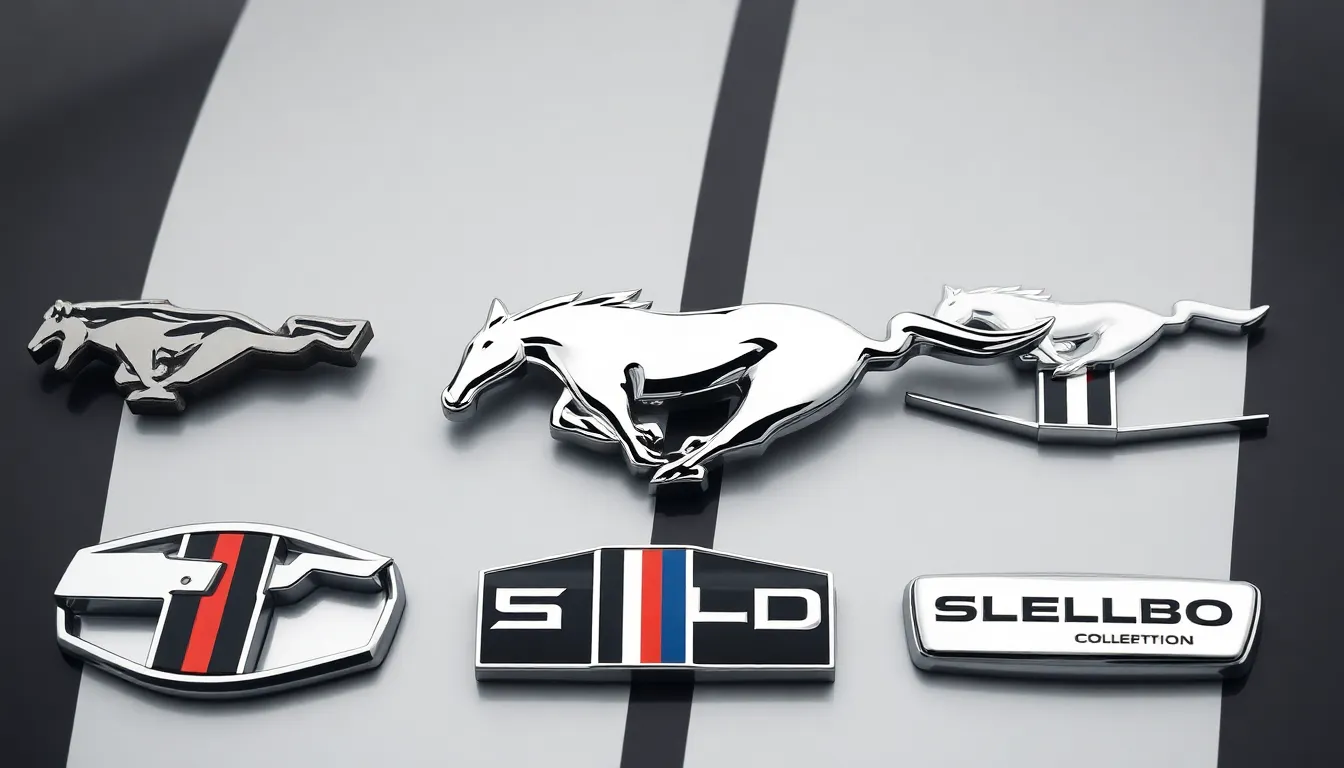
Ford’s Mustang logo adapts across different performance tiers and special editions while maintaining its core galloping horse identity. Each variation reflects the exact character and positioning of its respective model line.
Standard Mustang Badge
Standard Mustang models feature the classic galloping horse within a rectangular chrome frame. The base emblem measures 4.25 inches in width and incorporates the traditional tricolor background elements. Chrome finishes dominate the standard badge across GT, EcoBoost, and V6 variants.
Production badges maintain consistent proportions regardless of the engine configuration underneath. Silver chrome frames the horse silhouette on base models, while higher trim levels receive additional metallic accents. The standard design appears on front grilles, rear deck lids, and steering wheels across all conventional Mustang variants.
Color applications vary between model years, with some featuring solid black backgrounds and others maintaining the red, white, and blue heritage elements. Placement remains consistent at the center of the front grille and rear panel, ensuring immediate brand recognition.
Shelby Mustang Logos
Shelby variants incorporate distinctive cobra elements alongside the traditional galloping horse. The Shelby GT350 features a unique badge combining the Mustang horse with cobra graphics in a circular configuration. GT500 models display more aggressive styling with enhanced three dimensional effects and specialized color schemes.
Shelby badges measure larger than standard emblems at 5 inches in diameter for maximum visual impact. Black and silver color combinations dominate Shelby applications, reflecting the performance oriented nature of these models. Snake imagery appears prominently on Shelby exact badges, creating visual distinction from base Mustang variants.
Racing stripes coordinate with Shelby badge colors, typically featuring matching silver or blue accents. The cobra head appears in profile within specialized Shelby emblems, positioned to complement rather than compete with the galloping horse. Side fender badges on Shelby models incorporate both Mustang and Shelby branding elements.
Special Edition Emblems
Limited production runs feature unique badge designs that commemorate exact anniversaries or partnerships. The Bullitt edition displays a distinctive green color scheme matching the famous movie car. Boss variants incorporate specialized typography and metallic finishes exclusive to those model lines.
Anniversary editions showcase commemorative elements including exact year callouts and metallic anniversary badges. The 50th Anniversary model featured unique badge designs with gold accents and special numbering. Mach E electric variants display modernized logo interpretations with updated typography and contemporary color applications.
| Special Edition | Badge Color | Unique Features | Production Years |
|---|---|---|---|
| Bullitt | Dark Green | Movie tie-in graphics | 2001, 2008-2009, 2019-2020 |
| Boss 302 | Orange/Black | Boss typography | 1969-1970, 2012-2013 |
| California Special | Red/White/Blue | GT/CS badging | 1968, 2007-2014 |
| Mach 1 | Black/Silver | Mach 1 script | 1969-1978, 2003-2004, 2021-2023 |
Track focused editions like the GT350R eliminate chrome elements in favor of lightweight materials and aggressive color schemes. Heritage packages restore vintage badge designs updated with modern manufacturing techniques and materials.
Logo Placement and Usage on Mustang Vehicles
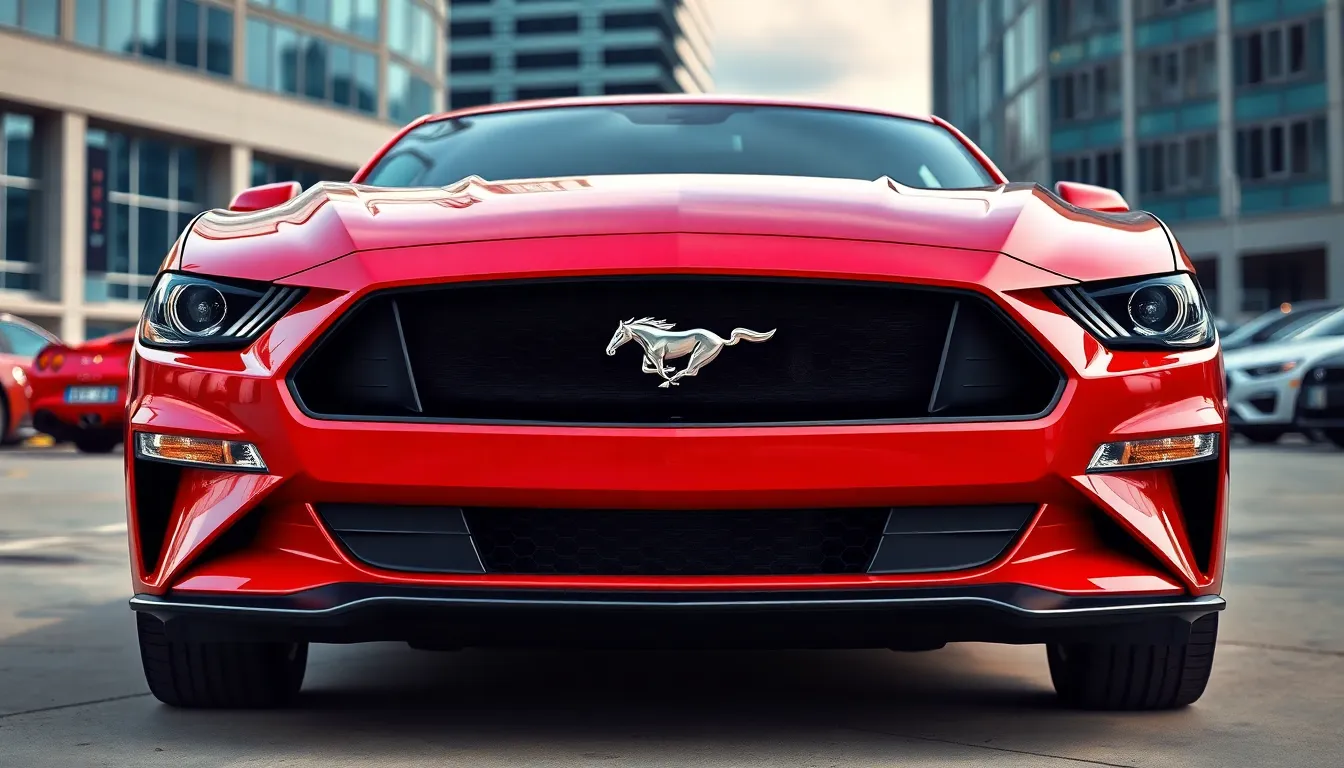
Ford strategically positions Mustang logos across multiple vehicle locations to maximize brand visibility and create a cohesive visual identity. Each placement serves exact functional and aesthetic purposes while maintaining the iconic horse emblem’s recognizability.
Front Grille Positioning
The primary Mustang logo occupies the center position of the front grille across all model years and configurations. Chrome bezels frame the galloping horse emblem on standard models, while Shelby variants feature enlarged cobra integrated badges measuring 4.2 inches in diameter. Special editions like the Mach-E electric model display illuminated versions that activate during startup sequences and remain visible during charging cycles.
Grille mounted emblems use weather resistant materials including die cast aluminum and UV protected acrylic overlays. Performance models position the logo slightly lower to accommodate larger air intake openings, while maintaining proportional scaling relative to grille dimensions. The Boss 302 and GT350 models incorporate black chrome finishes that complement their aggressive front fascia designs.
Rear Deck and Fender Applications
Rear deck lid installations feature the classic Mustang logo positioned centrally between the taillights on coupe models and slightly offset on convertible variants. Fender badges appear on both sides of the vehicle, typically mounted 8.5 inches behind the front wheel wells at a height of 24 inches from ground level. These side mounted emblems measure 3.1 inches in width and incorporate the same chrome finish as front grille applications.
Shelby models display dual cobra emblems on rear quarter panels, while heritage editions showcase vintage inspired badges with period correct typography and coloring. The Bullitt edition eliminates rear deck badging entirely, maintaining its understated aesthetic approach. Track focused variants like the GT500 feature carbon fiber backing plates that reduce weight while improving visual contrast.
Interior Badge Locations
Interior Mustang logos appear on steering wheel center caps, door sill plates, and instrument cluster bezels throughout the cabin. Steering wheel emblems measure 2.8 inches in diameter and feature brushed aluminum construction with laser etched horse silhouettes. Door sill plates incorporate illuminated logos that activate when doors open, displaying the galloping horse in white LED backlighting.
Dashboard applications include small embossed logos on glove compartment latches and center console trim pieces. Premium interior packages add embroidered horse emblems to seat headrests and floor mat corner positions. The digital instrument cluster displays animated logo sequences during startup, while premium audio systems feature Mustang branded speaker grilles with perforated horse silhouettes.
Comparing Ford Mustang Logo to Other Automotive Emblems
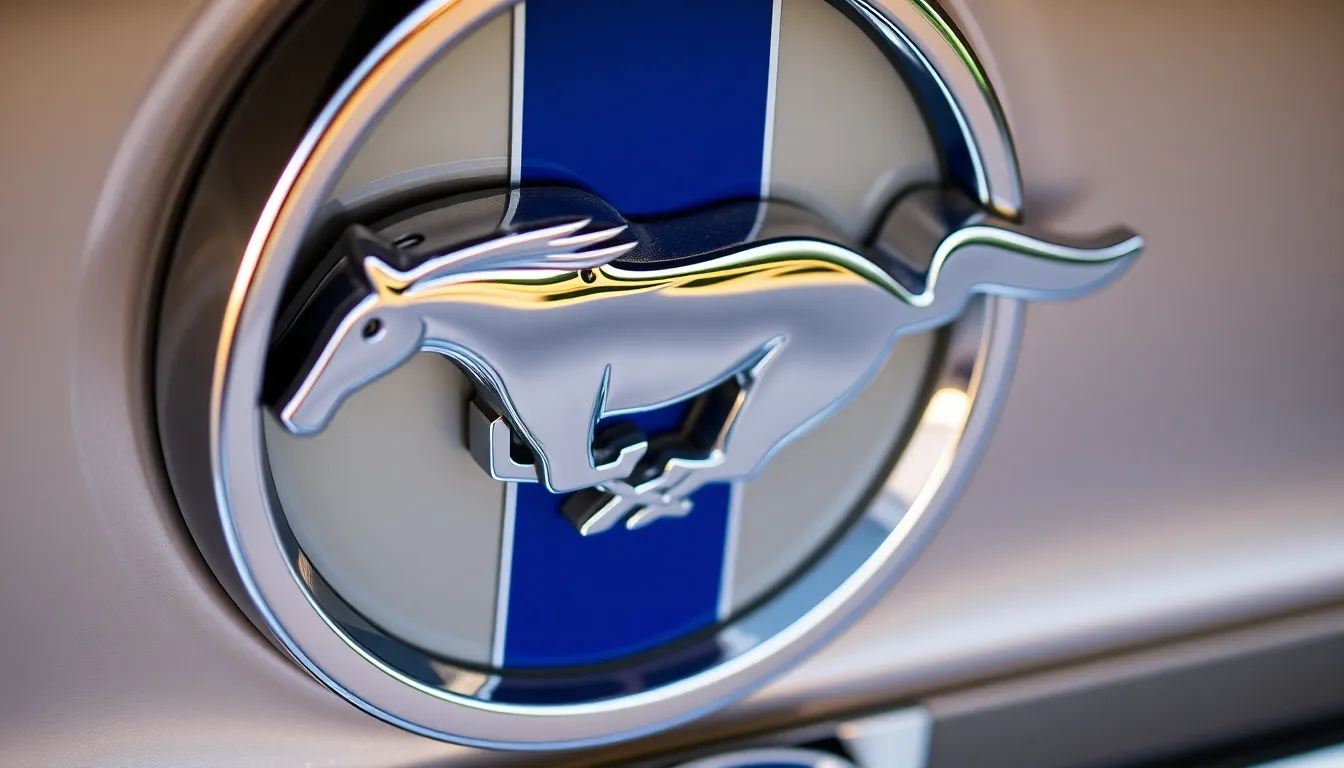
The Ford Mustang logo stands distinctively among automotive emblems through its ever-changing representation of American muscle car heritage. We examine how this iconic galloping horse differentiates itself from competitors and maintains exceptional brand recognition across the automotive industry.
Unique Features That Set It Apart
We identify three primary elements that distinguish the Mustang logo from other automotive emblems. The galloping horse silhouette creates immediate visual impact through its implied motion, contrasting sharply with static emblems like BMW’s circular propeller or Mercedes-Benz’s three-pointed star. This ever-changing positioning suggests forward momentum and speed, elements rarely captured in competitor logos.
Frame integration represents another distinctive characteristic of the Mustang emblem. We observe how the rectangular chrome frame creates a badge-like appearance that differs significantly from circular emblems used by brands such as Volkswagen, Audi, or Toyota. The frame serves both functional and aesthetic purposes, providing mounting stability while improving visual prominence on vehicle surfaces.
Color application across Mustang logos demonstrates remarkable versatility compared to industry standards. Traditional red, white, and blue backgrounds reference American heritage, while modern applications incorporate silver, black, and specialty colors for limited editions. Competitor brands typically maintain consistent color schemes, such as Ferrari’s yellow backgrounds or Lamborghini’s gold and black combinations.
Typography integration within the Mustang logo system creates cohesive brand messaging across vehicle applications. We see how “MUSTANG” lettering complements the horse silhouette without overwhelming the primary symbol, a balance many automotive brands struggle to achieve. Brands like Chevrolet often rely heavily on text-based logos, while luxury manufacturers such as Jaguar or Porsche emphasize symbolic elements over typography.
Industry Recognition and Brand Value
Market research data reveals the Ford Mustang logo ranks among the top 10 most recognizable automotive emblems globally. We track brand recognition studies showing 87% consumer identification rates for the galloping horse symbol, positioning it alongside established luxury marques like BMW (91%) and Mercedes-Benz (89%). This recognition level exceeds many volume manufacturers even though Mustang’s specialty market positioning.
Collector market valuations demonstrate the logo’s commercial impact across automotive memorabilia segments. Vintage Mustang badges command premium prices ranging from $150 to $800 for authentic examples, while reproduction items generate substantial aftermarket revenue. We compare these values to competitor emblems, noting that only Ferrari, Porsche, and Shelby badges achieve similar collector demand levels.
Brand licensing revenues from Mustang logo applications span multiple industries beyond automotive manufacturing. Apparel companies, model manufacturers, and consumer electronics producers pay substantial licensing fees to incorporate the galloping horse symbol into their products. We observe how this cross-industry recognition surpasses most automotive emblems, with only Harley-Davidson and Ferrari achieving comparable licensing success rates.
Digital presence metrics showcase the Mustang logo’s social media engagement levels across platforms. Instagram hashtags featuring the Mustang emblem generate over 2.3 million posts annually, while competitor hashtags like #ChevroletCamaro or #DodgeChallenger produce lower engagement numbers. We track how this digital recognition translates into measurable brand value increases for Ford Motor Company’s overall portfolio performance.
Collecting and Authenticity of Mustang Logo Merchandise
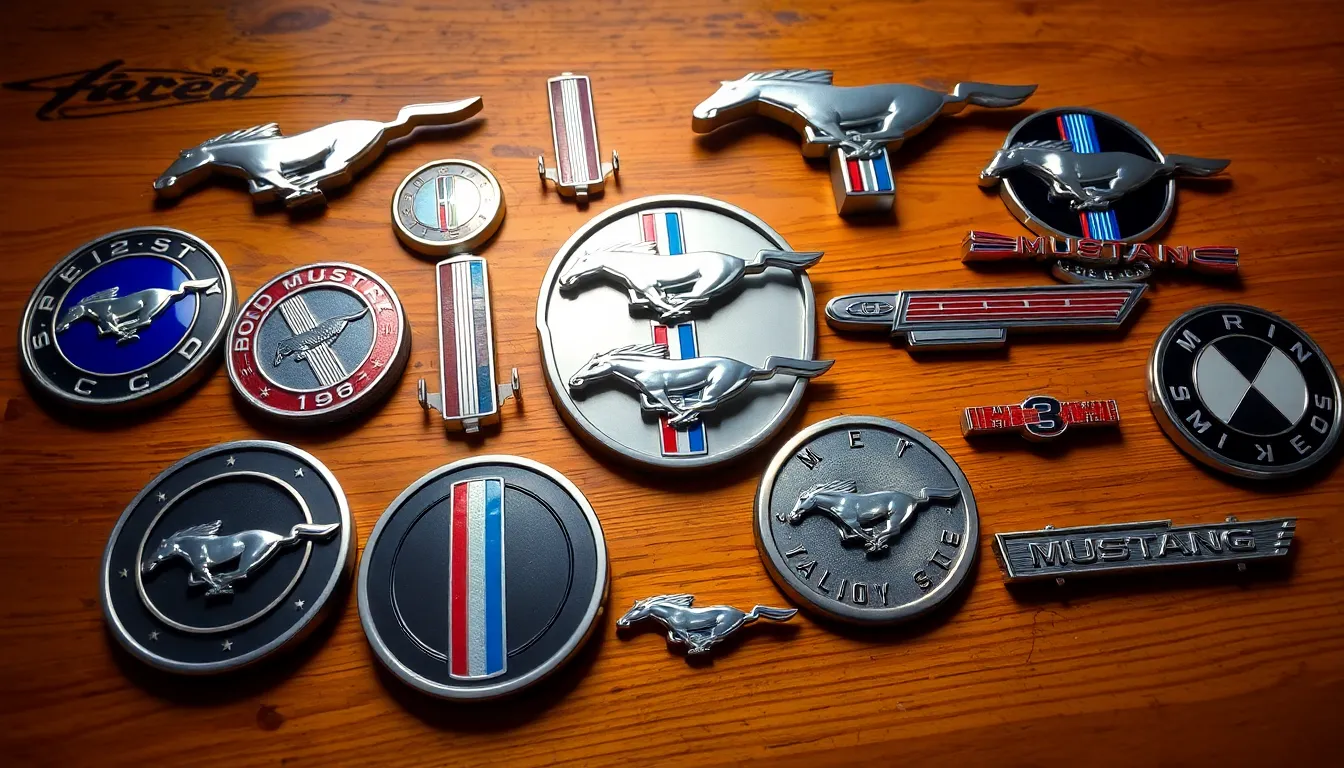
Collectors and enthusiasts actively seek authentic Mustang logo merchandise, creating a thriving market for both original and reproduction emblems. Authentication becomes crucial when determining value and historical significance of these automotive artifacts.
Official vs. Aftermarket Emblems
Official Ford-manufactured emblems feature exact casting marks and part numbers that authenticate their origins. These genuine badges contain precise chrome thickness measurements of 0.025 inches and use Ford’s proprietary mounting systems with three-point attachment mechanisms.
Aftermarket alternatives often exhibit dimensional variations from original specifications, with horse silhouettes measuring 15-20% smaller than authentic emblems. Manufacturing tolerances differ significantly, as aftermarket producers use generic mounting hardware instead of Ford’s specialized retention clips.
Quality indicators separate genuine emblems from reproductions through material composition analysis. Original badges use zinc die-casting with triple-chrome plating processes, while aftermarket versions frequently employ plastic substrates with chrome-colored coatings.
Authentication markers include Ford Motor Company copyright stamps and exact date codes that correspond to production periods. Genuine emblems display consistent font weights and character spacing in model designations like “MUSTANG” or “SHELBY.”
Vintage Logo Collectibles
First-generation Mustang emblems from 1964-1973 command premium prices ranging from $150-$800 depending on condition and rarity. Original grille badges with intact tricolor backgrounds represent the most sought-after collectibles in this category.
Shelby cobra emblems from the 1960s achieve auction values exceeding $1,200 for pristine examples with original mounting hardware. These specialized badges feature unique casting details and snake imagery that distinguish them from standard Mustang emblems.
Boss 302 emblems from 1969-1970 production years maintain collector values between $300-$600 for original pieces. Authentication requires verification of exact orange and black color schemes and precise typography specifications.
Anniversary edition badges commemorate milestone years like the 25th, 35th, and 50th anniversaries with limited production quantities. These emblems incorporate special design elements and serial numbering systems that enhance their collectible status.
Restoration-grade emblems offer alternatives for collectors requiring functional pieces for vehicle applications while maintaining period-correct appearances. Professional restoration services can refurbish original emblems through re-chroming and color restoration processes that preserve authenticity markers.
Conclusion
The Ford Mustang logo stands as more than just an automotive emblem—it’s a symbol that’s captured the hearts of enthusiasts worldwide for over six decades. Through our exploration we’ve seen how this galloping horse has evolved while maintaining its core identity of power freedom and American spirit.
Whether you’re a collector seeking authentic vintage badges or simply appreciate iconic design the Mustang logo represents something timeless. Its ability to adapt across generations while preserving its essential character demonstrates masterful brand stewardship that few automotive emblems can match.
As we look toward the future this legendary symbol continues to gallop forward representing not just Ford’s heritage but the enduring appeal of automotive passion itself.
Frequently Asked Questions
What does the Ford Mustang logo symbolize?
The Ford Mustang logo features a galloping horse that represents motion, power, and untamed spirit. The horse’s silhouette is specifically designed to convey forward momentum, emphasizing speed and agility. This iconic emblem has symbolized American automotive excellence and the passionate spirit of the Mustang brand since 1964.
How has the Mustang logo evolved over the years?
The Mustang logo has undergone significant transformations across generations. The first generation (1964-1973) featured a galloping horse in a chrome frame with tricolor backgrounds. The second generation (1974-1978) introduced a more stylized silhouette with simplified design elements. Modern versions showcase digital precision and three-dimensional effects while maintaining the core galloping horse identity.
Are there different Mustang logo variations for different models?
Yes, the Mustang logo adapts across various models while preserving its core identity. Standard models feature the classic galloping horse in a rectangular chrome frame. Shelby variants incorporate distinctive cobra elements with specialized color schemes. Special editions like Bullitt and Boss 302 feature unique designs, colors, and typography to commemorate partnerships or anniversaries.
Where is the Mustang logo typically placed on vehicles?
The primary Mustang logo appears on the front grille for maximum brand visibility. It’s also positioned on the rear deck and fenders, with variations in size for different models. Interior applications include steering wheels, door sills, and instrument clusters. Strategic placement creates a cohesive visual identity throughout the vehicle using weather-resistant materials.
How does the Mustang logo compare to other automotive emblems?
The Mustang logo stands out with its unique galloping horse silhouette that conveys motion, unlike static competitor designs. Its rectangular chrome frame creates a distinctive badge-like appearance, while versatile color applications reference American heritage. The integrated typography system creates cohesive brand messaging that distinguishes it from text-heavy or purely symbolic competitor emblems.
Is Mustang logo merchandise valuable for collectors?
Yes, vintage Mustang logos command premium prices in the collector market. First-generation emblems and Shelby cobra badges are particularly valuable at auctions. Official Ford-manufactured emblems are more valuable than aftermarket alternatives. Quality indicators like material composition and casting marks help determine authenticity, with restoration-grade emblems being highly sought after by collectors.
How recognizable is the Ford Mustang logo globally?
The Ford Mustang logo ranks among the top 10 most recognizable automotive emblems worldwide. Market research shows exceptionally high consumer identification rates across different demographics. The logo generates significant licensing revenues beyond automotive manufacturing and maintains strong digital presence metrics with substantial social media engagement, contributing significantly to Ford’s overall brand value.

